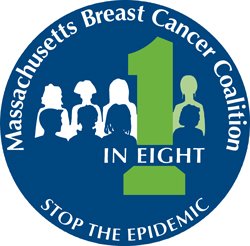Once again we are sitting on the cusp of “Breast Cancer Awareness Month,” where most of the messaging will revolve around shopping for a cure. Mentions of the “Cure,” the ‘just around the corner’ resolution to this horrific disease is prolific for the 31 days of October. The complexities of public health, the importance of patient advocacy, and educational outreach is reduced and redacted to a simple phrase: “For a Cure.” This catchy marketing phrase and its well known corresponding color and ribbon accoutrement eradicates the human element of a breast cancer diagnosis. This phrase does little to support those coping with this harsh diagnosis nor does it protect future generations.
Breast cancer awareness should not have to be reduced to a simple phrase or pink-washed to be impactful. In 31 days, together, we can take meaningful action to reduce the burden of environmentally-linked diseases. While grateful for all the efforts and funding towards treatment options, instead of a pink movement this October and a reiteration of the “For a Cure” marketing, we ask all our supporters to use the 31 days of October to truly expand breast cancer awareness to encompass prevention, chemicals of concern, and to “go green” this month.
Minimizing exposure to chemicals linked with negative health impacts can lessen the burden of disease, reduce the cost of health care, and improve public health. The Massachusetts Breast Cancer Coalition has been at the forefront of this movement since our inception in 1991, and now through our Let’s Talk Prevention: Reducing Toxic Exposures program, Research and Advocacy Video Series, and our on-going advocacy with state and federal legislation.
Scientific research illuminates breast cancer causality; we now know that only 5-10% of breast cancer diagnoses are associated with a family history of the disease, with another 15-20% of breast cancers linked to lifestyle factors – this leaves a staggering 70 – 80% of cases left unaccounted. It is within this statistic, that 70 – 80% of breast cancer diagnosis cannot be attributed to lifestyle or genetic inheritance, where we are seeing a growing body of research and leading scientific journals reporting on the links of exposure to carcinogenic and endocrine disrupting chemicals and breast cancer diagnoses.
Dr. Michael Misialek of Newton-Wellesley Hospital and Massachusetts Breast Cancer Coalition Medical Advisor, reflects on the value of prevention: “It costs much less to keep a patient out of the hospital than in one. Efforts aimed at disease prevention have the potential to save more lives than those focused on improving treatment regimens.”
Unfortunately, the “For a Cure” messaging influences public health funding priorities. Of the $5 billion (yes, $5 billion) spent by the National Cancer Institute in 2014, less than 7% was directed towards prevention. Per the National Institute of Health, 69.5% of breast cancer funding is spent on research; 14.2% on resource development, 9.7% on program management and support, and 6.6% on cancer prevention and control. [1]
How many lives could be saved if we focus on prevention every day? Imagine if we funded critical water quality research to explore the connection of endocrine disrupting chemicals found in our water supply and public health. Imagine if breast cancer discourse included prevention.
We are making some progress towards reducing exposure to chemicals of concern but additional changes must be made to reduce exposure to chemicals linked with health consequences including cancer, birth defects, reproductive problems, and more. We applaud the manufacturers who recognize that replacing toxins with safe, green alternatives is more than just a fashionable trend — it’s good for the economy and good for public health.
Without a redistribution of time, attention, and funding in support of preventive measures, the legacy of breast cancer and other diseases will remain largely unchanged for future generations. We need to keep asking ourselves critical questions, advocating for changes to public policy, and building a world where marketing slogans and chemical industry lobbyists do not dictate our public health policy or budgets. “Prevention” may not sound as appealing as curing a disease, but efforts towards this goal would be far more impactful – and isn’t that the aim of “Breast Cancer Awareness” month?
[1] Source: Congressional Justification Fiscal Year 2014 for NCI http://www.cancer.gov/about-nci/budget/congressional-justification/2014cj

